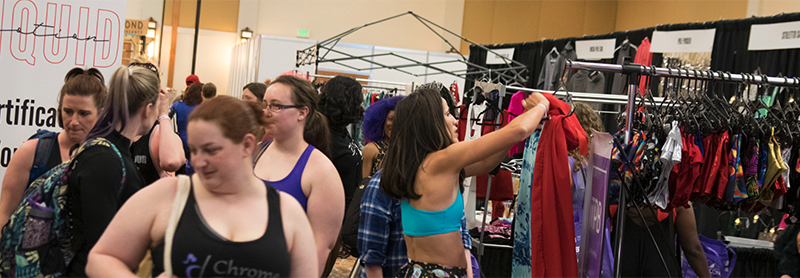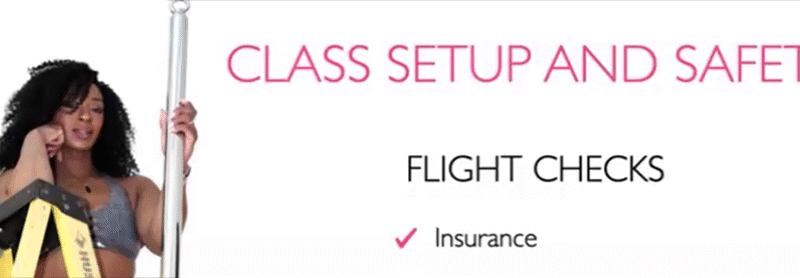This post is based on the webinar “Out of the Dark, Tax Planning for the…

How to Fund Your Pole Based Business
From getting capital to start up your business, propel your business forward or just to manage cash flow between slow months, getting more money is always a challenge.
There is no “best way” to fund a business, rather there are lots of options that will help you start or continue to fund your business. You will likely use a combination of these options as your business grows and changes. All have positives and negatives, differing timelines and other requirements that will affect your decision to implement or to ignore.
My money, my problem
The most traditional way to personally fund your business includes through savings, through accessing your retirement funds or other investments (many IRAs and 401Ks offer “loan” options that do not require you to cash out your entire savings), debt funding through credit cards or even personal loans (see below for more information on loans.) Financial advisors generally recommend that you have 3-6 months of expenses CASH in your bank account for personal emergencies—you can use the same metric for your business. If all your cash isn’t liquid, make sure you have alternative personal sources lined up for when you do need them. Review your credit card terms and understand cash advance rules, interest rate changes and if/when you are eligible for a credit increase. If you are going to access other financial vehicles such as your retirement or even your home’s equity in the form of a line of credit or loan, do the paperwork first—don’t presume it’ll be there instantly when your business really needs it. Read the fine print and understand what you can do and how long it takes (timelines can vary between days and weeks to access funds). For more information on using your home to help fund your business, read this post.
Using Lenders
Traditional loans are another way to fund your business, either personally securing them with your own credit and collateral (like a house or car) or through your business directly. The challenge with most loans is that if your credit history is iffy and/or your business doesn’t have a solid financial history yet, traditional lenders like banks will not give you a loan AND will take weeks to tell you that they have rejected you. Depending on where you live and your demographic details, you may be eligible for loans through smaller banks, credit unions or local community programs that overlook credit issues and may even provide business counseling and/or mentorship. If you are active or former military, are not a white man and/or live in an economically depressed area, you may have access to additional subsidized loans through the federal government. Many of these loans are provided through local organizations, so do your homework before committing to one loan resource. One challenge with local organizations is that they do not fund everyone and pole particularly is not a well-understood industry and your application may be rejected due to adult content. Talk to your loan officers and find out all the requirements first.
Accessing Grants
Similar to loans, grants through the federal government’s Small Business Administration (SBA) or local organizations (community, faith-based or industry/project specific) might be available to you, particularly if you are a woman or part of an ethnic minority group. Like loans, grants have different requirements and are not always accessible to for-profit companies. Grants often require a proposal or project plan detailing why you should receive the grant, what you are going to do with the money and how you will measure success. Grants, particularly at the government level, may take months to be reviewed and processed so start early if you think grants are right for you. This is not a good option if you suddenly realize you can’t make payroll on money. (One example of a grant website)
Additional grant resources:
Trying Crowdfunding
Crowdfunding is a relatively new concept based mostly online and is very accessible for for-profit/non-profit, large and small businesses either to start up or to propel the business to the next level. There are LOTS of different websites available, each with their own rules, fees, timelines and relevance your specific business. This list is a good starting point to review should you choose to crowdfund your business. If you are ready to start but unsure how to develop a professional pitch, there are companies that can help you with that—for a fee of course. Crowdfunding is not a guarantee and some small business get overwhelmed by the amount of time required to launch and manage a campaign. Several pole businesses have successfully done crowdfunding campaigns, including two successful Kickstarter campaigns by Pole Dancing Adventures to create graphic novels. Several other pole businesses have used Teespring to start apparel lines and GoFundMe to support personal campaigns.
Spending Other Peoples’ Money
The elusive “investor” could be a family member, an “Angel” investor (a wealthy person you have some connection to that gives you money) or even a venture capitalist (typically for more high tech industries). Every person is different and every situation is different. Typically you privately arrange some sort of financial contract that could involve a profit split, a personal loan, a other trade in services or even go on TV and convince the Shark Tank crew to invest in you. Investors can be great or terrible for businesses depending on the details of the arrangement. Whatever arrangement you make with someone—get it in writing. Several business gurus recommend NOT to borrow money from family or friends as it can often complicate relationships. Use this tip at your own risk.
Understanding Alternative Lending
This is a broad category of new options changing the landscape for small business loans. When traditional lending can make you wait weeks (or months!) to fund you, newer online “lenders” like Kabbage.com, PayPal Holdings and Intuit QuickBooks Capital make lending decision in seconds through linking your bank account, payment accounts (like Authoriz.Net, eBay or PayPal) and social media accounts. There are no collateral requirements and the loan amounts are typically higher than traditional lenders, up to $100K depending on the business including factors such as “capacity to repay, character, and the consistency or stability of the business” and is best for businesses 6 months or older with $50,000 or more in yearly revenue. Interest rates are very high (27 to even 40% depending) over a short period of time, 6 or 12-month (accessible once you’ve paid on a 6-month loan successfully) period. Caution, these alternative lenders have been accused of being predatory to vulnerable small businesses, despite making up almost a third of small business loans: “Even before coronavirus hammered the U.S. economy, small businesses faced high hurdles in securing loans from traditional banks, and alternative arrangements with unregulated lenders were yielding stratospheric effective interest rates and aggressive collection tactics that imperiled small merchants, as reported by NBC News.” Use only as a last resort.
Now, What really works?
Most small businesses need a mix of funding sources when first starting and throughout their life cycle. Even with the best budgeting, businesses can cost more money than you expect and one unexpectedly bad month can ruin financial outlooks. Many pole businesses report challenges receiving grants and loans. The pole businesses that have successfully received loans for their businesses have had a relationship with their lender/their bank and have been in business for several years with a long history of revenue. Make sure you have multiple options when you are first starting out and if you are in business already, consider setting up a sizeable fund for emergencies or applying for open lines of business credit for when you don’t need the credit. Banks are more willing to give you credit when you don’t need it and are showing a profit then when you are “in the red.”



